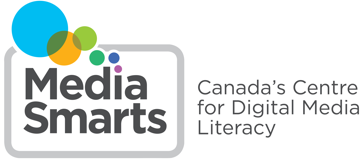

Co-Viewing With Your Kids
One of the most important things you can do to raise media-savvy kids is what’s called shared media engagement. That includes listening to their music, watching TV, movies and videos together, getting to know their favourite apps and playing the games they enjoy. It also includes talking to them about their media lives: what they like, what they’re excited about or looking forward to, and what worries or annoys them. While just being with them is an important step, this is also a great opportunity to help your kids think critically about the media they consume, by asking them questions about it and, sometimes, answering back.

Pyramid Power: How Hate Spreads Online
The last few weeks have shed an unprecedented light on the use of digital media to spread and inspire hatred. Michael Zehaf-Bibeau, the perpetrator in the attacks on Canada’s National War Memorial and Parliament buildings, appears to have been motivated in part by exposure to online postings by a self-described member of the Islamic state[1], and the Federal government has already stated that it intends to create tools to remove online content that promotes the “proliferation of terrorism.”[2]

So Many Choices!
This lesson introduces the students to the first steps in finding information on the Internet. Specifically, this lesson helps students understand the basic good practices of searching for something online: be accompanied by a trusted adult, start with a safe site and understand the use and power of using good links and keywords to find what they are looking for and to avoid bad results.

Avatars and body image
In this lesson students are introduced to the concept of "avatars" and share their experiences creating and playing avatars in video games and virtual worlds. They then create avatars using a program that is intentionally limited in terms of available body types and gender markers, first creating an avatar of their own gender and then of the opposite gender, and then discuss the program and relate it to representations of gender and body image in games and virtual worlds and in other media. Students then create avatars using a much more flexible version of the program and compare that experience to the more limited version. Finally, students use the more versatile program to create avatars that represent how they see themselves and how they would like others to see them online and reflect on the choices that went into creating them.

Game Time
In this lesson, students consider the positive aspects of video games as well as the ways in which games may take time away from other activities they enjoy. Students are introduced to the idea of balancing game and screen time with other parts of their lives and learn about the reasons why they may be tempted to spend more time playing games or find it difficult to stop playing. They then keep a diary of their game play (or another screen activity if they do not play video games) that prompts them to reflect on their gaming habits. Partway through that process, they are introduced to techniques that will help them moderate their game play and deal with the difficulties they may feel reducing game time. Finally, students reflect on the experience and develop a plan to make their game play more mindful.

Taming the Wild Wiki - Lesson
Students are introduced to Wikipedia, the user-edited online encyclopedia, and given an overview of its strengths and weaknesses as a research source.

Representing Ourselves Online
In this lesson, students talk about dressing up and taking on identities that are similar to or different from them. They are then introduced to the idea of avatars as a kind of “dressing up” inside video games and consider the ways in which the technical, generic and aesthetic limitations on avatar creation and customization affect their choices and their ability to represent themselves online.

Can You Spot the Ad?
In this lesson, students will learn about the concept of branded content and will learn to differentiate between branded images and videos and non-branded images and videos in online and offline contexts through a series of questions and discussions.
